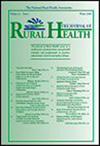Adverse childhood experiences and preventive health care among rural US children: A cross-sectional examination of 2022 National Health Interview Survey data
Abstract
Purpose
Rural-residing children have poor access to preventive health care due to geographic and socioeconomic issues, yet the role of adverse childhood experiences (ACEs) in preventive care for rural children has been understudied. It is hypothesized that among rural-residing children, those with ≥1 ACE will have lower utilization of preventive health care, with differences by sex.
Methods
Data for 425 (weighted n = 3,949,102) children (aged 9-17) residing in “nonmetropolitan” (2013 NCHS Urban-Rural Classification) were drawn from the 2022 National Health Interview Survey. Physician visit in the past 12 months (yes/no), dental visit in the past 12 months (yes/no), COVID-19, flu, and HPV vaccination (yes/no) were self-reported. Participants self-reported (yes/no) to 6 ACEs (high ACEs ≥1). Logistic regression estimated odds ratios and 95% confidence intervals for associations between ACEs and preventive health outcomes, adjusted for demographic and health care factors. This manuscript adheres to STROBE guidelines.
Findings
Children with ≥1 ACE were 81% more likely (OR = 1.81, 95% CI 1.04, 3.18) to receive a flu vaccination and 184% (OR = 2.84, 95% CI 1.66, 4.85) more likely to receive an HPV vaccination compared to children with 0 ACEs. No significant associations were found between ACEs and other preventive health care. Boys with ≥1 ACE had decreased odds (OR = 0.34, 95% CI 0.13, 0.94) of visiting a dentist, while girls with ≥1 ACE had increased odds (OR = 3.87, 95% CI 1.56, 9.60) of receiving an HPV vaccination.
Conclusions
Children with ≥1 ACE were more likely to receive a flu vaccination and HPV vaccination. The effect of ACEs on preventive health care may differ by sex among rural residents, yet additional research is warranted to inform prevention efforts in rural communities.


 求助内容:
求助内容: 应助结果提醒方式:
应助结果提醒方式:


